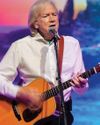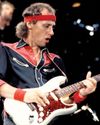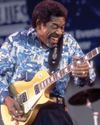
GT: What is it about guitar instrumentals that appeals to you?
NP: Well, being a guitarist it’s really interesting to hear how other players tackle material, be it original or more familiar. I used to actively avoid listening to other guitarists as I remember somebody telling me that I would get more from jazz if I didn’t concentrate on my own instrument. But as time went on, I found myself turning toward records with guitarists in the line-up. Almost exclusively, actually! The beauty of the guitar is that it can enthral as much in a solo setting as in a large ensemble, and everything in between. In a small group recording, the guitar has so much to offer, with its ability to take the lead as well as accompany. Someone like Jim Hall can sound enormous, especially on his Live In Toronto trio album, but a guitarist can fit into virtually any format. They just have to change their approach. Either that or they have to be given a fighting chance! For instance, you’d think that a guitar would be swallowed up in a big band situation and to a degree it can, but a good arranger will create space. Joe Pass In Hamburg is a great example of this. The guitar is kind of dwarfed by the enormity of the big band, but they make it work in a really exciting and musical way.
GT: What can an instrumental provide a listener that a vocal song can’t?
This story is from the {{IssueName}} edition of {{MagazineName}}.
Start your 7-day Magzter GOLD free trial to access thousands of curated premium stories, and 9,000+ magazines and newspapers.
Already a subscriber ? Sign In
This story is from the {{IssueName}} edition of {{MagazineName}}.
Start your 7-day Magzter GOLD free trial to access thousands of curated premium stories, and 9,000+ magazines and newspapers.
Already a subscriber? Sign In

THE MOODY BLUES
This month Stuart Ryan delves into the picking style of this British prog legend whose acoustic guitar has powered many a Moody Blues song.

WAYNE KRANTZ
This issue Nick Mellor provides an insight into this brilliant jazz stylist, focusing on his approach to improvising over static chords.

OPEN G TUNING
Open tunings are great fun and can help create exciting new ideas. Simon Barnard shows how to incorporate open G tuning into your playing.

RODRIGO GOUVEIA
Last month we featured Mateus Asato, and mentioned the importance of the neo-soul style in his playing. Here we turn to his fellow Brazilian, the master of neo-soul fusion.

MARK KNOPFLER
Our topic this month is a master craftsman as both guitar player and songwriter. His style is unique and his influence spreads far and wide.

U2
Martin Cooper checks out the chiming pedal delay tones of this stadium-filling band from Dublin, Ireland, and guitarist The Edge.

LUTHER ALLISON
It’s blues with a touch of soul this month, as David Gerrish explores the dynamic, expressive style of an often overlooked Chicago bluesman.

JOHANN KASPAR MERTZ Capriccio
This month Declan Zapala explores the music of Austria at the turn of the Romantic period with a fiery caprice to level up your fingers and unlock your inner virtuoso.

THE CROSSROADS Michael Landau
John Wheatcroft explores the playing of a session ace _ and blazing blues-rock maestro who graces the top-flight m band of singer-songwriting legend, James Taylor.

VIDEO MASTERCLASS Troy Redfern
This month GT welcomes this slide guitar virtuoso. If you've been wanting to take your slide playing to the next level then this is one's for you. With Jon Bishop.